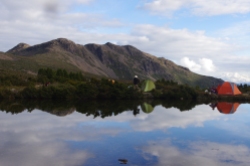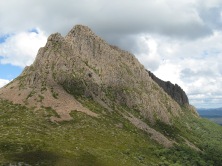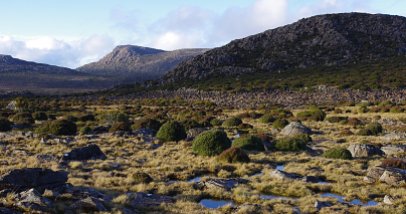[SCROLL DOWN for older news and background on the project]
UPDATE: July 2018: Regulator approves next step for new East Gippsland Mine
From a media release from the VIC government’s Earth Resources Regulation:
Earth Resources Regulation has granted an infrastructure mining licence for use of a tailings storage facility site alongside the proposed Stockman Mine, marking the next phase to establish this new project near Omeo and Benambra.
An agreement between the Victorian Government and WHSP Stockman sets a high benchmark in applying environmental safeguards and protecting local water courses, including the Tambo River.
The company has entered into a ‘post closure’ agreement to fund the ongoing monitoring and maintenance of a tailings storage facility, after the completion of mining and site rehabilitation.
The Stockman project received planning approval in 2014 after a detailed environmental assessment and public inquiry process. In December 2017 Australian mining company WHSP Stockman purchased the site with plans to undertake further exploration and commence mining.
An infrastructure mining licence application was lodged in January 2018. Following consideration of public submissions and the previous environmental assessment, Earth Resources Regulation has determined the company has met all requirements to use the existing tailings storage site.
Before mining operations proceed the company must submit a detailed workplan for approval, the main regulatory instrument used to set controls on operations, to Earth Resources Regulation.
The Victorian National Parks Association response to this announcement (check here for their full reaction):
“This approval is disappointing and concerning. The expanded tailings dam is all about short term gain, with the real possibility of long term pain if the dam leaks or collapses.”
“The original dam wall, which must form the foundation of the extended wall, is lined with a disintegrating membrane that is unlikely to last for more than 20 years. Failure of the dam could mean the release of acidic and toxic mine waste into the Tambo River and the internationally significant Gippsland Lakes”, says Mr Ingamells. The Environmental Effects Statement for the Stockman mine has said
“… the consequences of an unplanned release remain significant”.
The Victorian National Parks Association is concerned that the mine’s operators have been placed under no obligation to fix the dam wall before it is extended”.
UPDATE: December 2017: the state government has announced a new owner of the mine, and announced that it will re-open in 2018.
UPDATE: May 20, 2016: the company has announced that the proposal is suspended.
UPDATE: October 30, 2014: The Victorian Planning Minister, Matthew Guy has today approved the mine proposal.
The Minister’s report is here.
Reaction from Friends of the Earth.
background
The Stockman Project is located in the Victorian Alps, 470km by road north-east of Melbourne and 60km by road north east of Omeo. The project contains two copper-zinc-lead-silver-gold rich deposits, called Wilga and Currawong. Wilga was discovered in 1978 and Currawong in 1979. Denehurst mined the copper rich core of Wilga deposit from 1992 to 1996. In 2006, following rehabilitation of the plant site and tailings dam by the Victorian Department of Primary Industries, the project was put out for public tender as part of an exploration incentive program. Jabiru Metals Limited (Jabiru) was awarded the project in March 2007.
The Independence Group has now bought up Jabiru, and is proposing to recommission the Wilga mine and establish a new mine four kilometres to the north (the Currawong deposit).
Both new mining operations will be underground and located in State Forest where Jabiru has tenements consisting of an existing mining licence (MIN5523) and two exploration licences (EL5054 and EL5198). Both contain copper-zinc-lead-silver-gold ‘volcanogenic massive sulphide” (VMS) deposits, which are to be treated to produce copper-sulphide and zinc sulphide rich concentrates for sale to export markets in South East Asia.
The nearest communities are located between 20 to 40 kilometres to the west and south and include the towns of Benambra, Omeo and Swifts Creek. Local industry includes farming, grazing and tourism. Potentially impacted communities also include the towns of Ensay, Bruthen and Bairnsdale which are located along or in the vicinity of the proposed trucking route.
The proposal is estimated to require up to 1.5 gigalitres (GL) of water per annum. It will require a range of on and offsite ancillary infrastructure to support the mine operation, including a processing plant, access roads, water pipelines, electricity supply infrastructure, upgrades to the proposed major transport route (along the Great Alpine Road to Bairnsdale – a major tourist route), and worker accommodation.
It is estimated that about 950,000 tonnes of ore per annum would be mined and processed over a period of 7 to 8 years. In addition to the project needing a range of infrastructure for processing the ore, it requires tailings facilities for storing waste rock and tailings in the project area. Because of the failed project that occurred previously, leaving huge volumes of dangerous waste, it is the tailings facility that most concerns local residents.
On 16 August 2010, the Victorian Minister for Planning requested Jabiru to prepare an Environmental Effects Statement (EES) under the Environment Effects Act 1978 to assess the likely environmental effects of the proposal.
The EES document can be found here.
The project was also referred to the Australian Government under the Environment Protection and Biodiversity Conservation Act 1999 (EPBC Act).
The preparation of the EES is now well advanced, with the majority of the technical studies having now completed Stage 1 (existing conditions) and commenced Stage 2 (potential impacts).
The concluding Stage 3 of the technical studies (impact mitigation and management plans) began in the second half of 2011, with the overall final submission scheduled for government review by mid 2012. The company expects that final approvals will be granted in the second half of 2012.
Likely impacts
The main obvious benefit will come from job creation and injection of funds into the local community. There are, however, some significant concerns:
· Water and food production
The key concern is about water. This area is in a rainshadow region, with considerable water stress already. Agriculture, which is reliant on ground and surface water, is the mainstay of the local economy, and will continue as such long after the mine has closed. The community wants to ensure they are not left with a toxic legacy from this second mining operation. Water Licences from the Tambo River have not been available to farmers since 2004, and there is a fear that the ‘needs’ of the mine will be considered greater than the needs of local farmers given the limited water which is available in the region.
Water is likely to be obtained from several sources, including direct runoff to a water storage dam, supplemented by water from bore fields in the vicinity of
Benambra. The mine sits on the border of the headwaters of the Tambo River, which eventually flows into the Gippsland Lakes. The Lakes system is already under great ecological stress, largely because of input of pollutants and dredging at the mouth of the lakes, which is slowly making it a saline rather than freshwater system. Any reduced flow as a result of mining must be seen in terms of the overall health of the Gippsland Lakes.
The impacts on the surrounding underground water supply is not known. What must be made clear before the mine is allowed to proceed is exactly where the replacement water is coming from, and what pathway it will travel through to reach the aquifer. Recharge rates must be fully understood before new pressures are added to existing aquifers.
· Tailings dam
There are a number of deep concerns about the proposed structure of the tailings dam. What is known is that a previous mine in the area generated substantial waste, which was discharged into the Tambo River system.
The previous mine (Lake St Barbara Mine) left the community with a tailings dam that leached poisons into the head of the Tambo River and forced the state government to spend about $5 million on the rehabilitation of the site. Independence Group is planning to reuse this same tailings dam site, as well as create another storage downstream of the existing dam, which many locals believe has the potential to be dangerous. They are pleading with the company to consider taking a more environmentally safe alternative. As mentioned above, the Tambo River flows into the Gippsland Lakes System. Previous leakage from this dam into the river has been described as being like “battery acid”.
The company claims that this new use of the tailings dam will be safe because of re-design. However, the facility will contain hundreds of thousands of tonnes of contaminants in the tailings dam. It is estimated that around 2 km of Straight Creek will be dammed as part of creating the enlarged facility. Flash flood events could put substantial pressure on the dam for release into river systems below.
A better way:
Independence intend to stabilise the tailings by mixing them with limestone sand, which helps prevent the potential resuspension and oxidation of the tailings if they are disturbed under the water body, and then covering them with water.
Given this mine’s location in the headwaters of a significant river, local community members have called for best practise measures to be employed in creating the tailings dam, built in accordance with DPI guidelines. This would mean that it is lined with clay and membrane in the base and wall, and then covered over with membrane, on completion, which will then prevent oxidation.
· Biodiversity
The site is in a ‘relatively natural’ condition apart from areas disturbed by the former mining operation and past forestry activity. The native vegetation includes 16 different ecological vegetation classes; 24 significant fauna species have been identified as occurring within 5 km of the project site.
· Other impacts on the economy
Nature-based and travel tourism is of growing significance for the region. The heavily publicised ‘Great Alpine Touring Route’ covers some of the roads where heavy mine traffic will operate. These are predominantly winding and narrow mountain roads. A large number of large vehicles associated with the mine will pose a significant risk for all road travellers in the area. The region is one of the most popular motorcycle touring routes in Victoria.
Community Benefit Fund
Some in the community, including the group Voices of Benambra, have called for the creation of a community fund, with 2% of gross profits being put into a fund which is then allocated to the community. Given that this mine will have less than 10 years of operation and potentially a long term impact on the community, such a proposal seems very reasonable.
Community funds are sometimes created by energy and resource companies.























































February 28, 2018 at 9:43 am
The potential (most likely) for this project to heavily impact on the attributes of a large section of the community assets, natural environment and human health over a wide area makes it essential community feelings against the new proposal are heeded and prevents the proposal.going ahead.